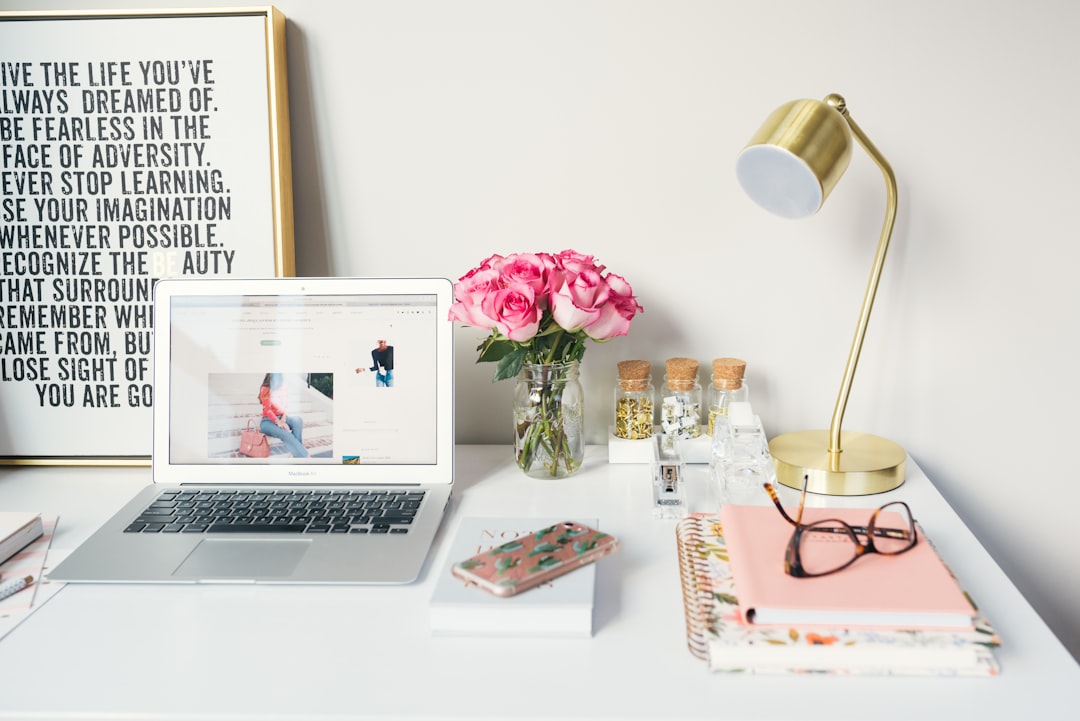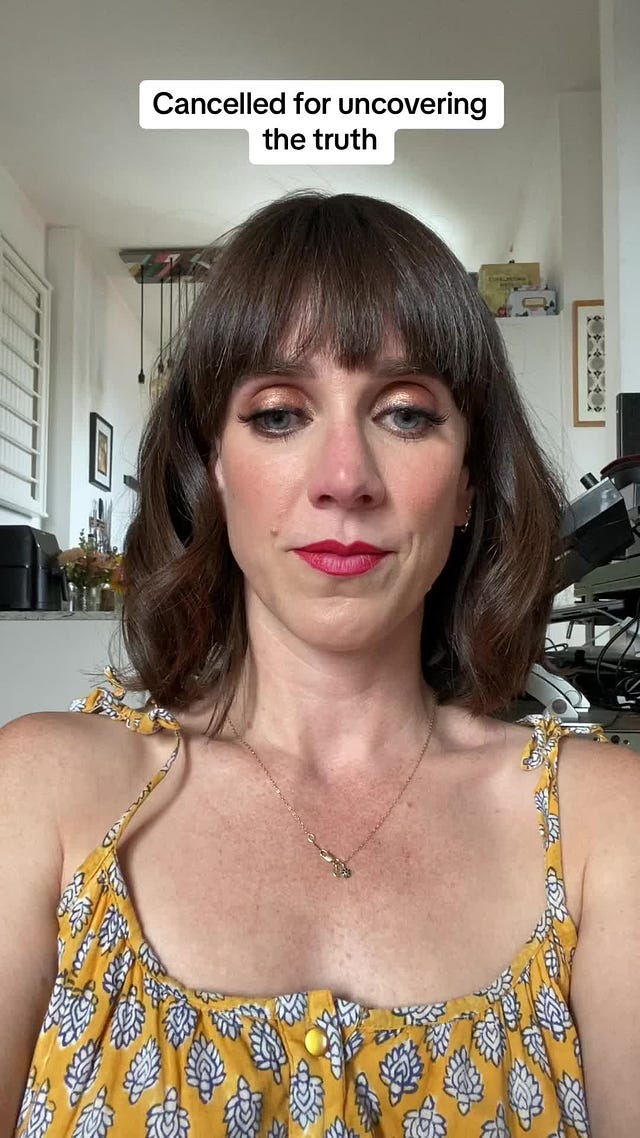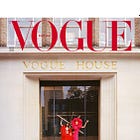So, You Want to Be a Fashion Journalist...
Sustainable fashion journalist and author Alden Wicker and I discuss the highs and lows of this crazy, rapidly changing business.
This issue may cut off in your email; tap the headline to read it in full in your browser.

Today, I’m publishing something a little different here in Back Row. Alden Wicker, sustainable fashion journalist and author of To Dye For: How Toxic Fashion Is Making Us Sick, asked me to collaborate on a story with her about the realities of modern fashion journalism, in effort to create a resource for young people interested in entering the profession. We exchanged emails on the topic, and I’m pleased to publish them below.
Opportunities in journalism are on a slow and steady decline, according to a recent study on journalism employment and the economic value of 850 journalism and communication programs by Georgetown University’s Center on Education and the Workforce.
Every month seems to bring more bad news for media as digital outlets — once thought to be the industry’s savior — struggle. So far in November, Condé Nast announced it was cutting 5 percent of its workforce, Jezebel shut down, and we learned Vice was eliminating dozens of jobs. These kinds of cuts will only continue as Google, Meta, and Amazon continue hoovering up the majority of digital advertising revenue, and publishers adjust to tech companies directing traffic elsewhere. A report from Challenger, Gray & Christmas showed that through October, more than 19,000 job cuts had been announced by media in 2023, while 2022 saw 3,000 cut in the same period.
Those who choose to go into journalism likely know this, but Georgetown’s study confirms it’s probably not going to make you rich.
Even if you’re not here to learn how to become a fashion writer, I hope you’ll find my exchange with Alden informative, and come away with a new appreciation for the independent work we both do that traditional media increasingly struggles to financially support. You can read more from Alden at her website EcoCult. And you can get more from Back Row by becoming a subscriber.
From: Alden Wicker
To: Amy Odell
Re: sustainable fashion journalism
Hey Amy,
I've been getting a lot of email requests from young people for informational interviews on how to get into sustainable fashion journalism. I should probably not do these conversations one-by-one, but create something that can be shared widely. I don't think it is the right convo for Tiktok since it deserves more nuance.
As someone who has written about traditional fashion media from a social and cultural perspective, I thought your point of view might be really valuable. Together, I think we could pull the curtain back on what may seem to a young woman fresh out of college a dream career — fancy fashion but also environmental and labor justice! — and talk about the realities of it.
Maybe we could start with what your impression of sustainable fashion journalism is?
Alden
From: Amy Odell
To: Alden Wicker
Re: sustainable fashion journalism
Hi Alden,
It’s great that young people are interested in reporting on sustainability in fashion specifically. I have to imagine shifting attitudes around consumerism have contributed to this. When I was coming up, the dream for many millennials was probably assisting Anna Wintour or getting a thankless job in a closet where the main tasks involved unpacking and shipping samples.
I remember what it's like to be an optimistic, energetic, aspiring journalist, so I never dissuade anybody from the profession. I have started advising people to build their own audience, because I have come to firmly believe that’s the only thing they'll be able to rely on in this industry. The easiest way to start doing that right now, I think, is to get on TikTok and start talking about fashion.
I recently persuaded you to join TikTok to start talking about your book, To Dye For: How Toxic Fashion Is Making Us Sick. You had instant success, if I'm not mistaken, because you posted a video about how you had booked a TV segment to talk about the book, but it had gotten pulled because the network was afraid of lawsuits from petrochemical companies.

 Tiktok failed to load.
Tiktok failed to load.Enable 3rd party cookies or use another browser
I think this speaks to a huge concern regarding sustainable fashion journalism: as it stands, telling the truth about how clothes are made is going to turn off brands with huge pocketbooks and great power in the marketplace. I am curious to know how you navigate this and how brands impact what you're doing?
Amy
From: Alden
To: Amy
Re: sustainable fashion journalism
I think my generation on down is just no longer willing to swallow un-skeptically the facade of a beautiful, perfect fashion industry. Fashion deserves to be taken seriously as an industry that impacts millions of people's lives and intersects with topics like: international development, colonialism, pollution, biodiversity loss, climate change, labor rights, economics, business reporting, plastic pollution, race, ethnic conflict, and on and on.
I do feel really bad, though, because the first email I got, I basically told the young woman that she was in for a rough road and I was considering my own potential exit strategy. (But if she's independently wealthy or has a partner with a well-paying job, go for it!) She didn't answer. It's a hard line to walk between setting someone up for failure in a dying career in a way that makes them feel like it's their fault for not succeeding, and shitting all over some idealistic young person's dream.
I listen to successful male journalists on the Longform podcast, who came up twenty years ago, talk about being a stringer in a foreign conflict, sleeping in their cars on reporting trips, working in newsrooms that no longer really exist, or just, you know, getting paid more than a dollar a word, and I think to myself: this isn't helpful at all. And I feel the same about sharing how I made it this far, because the avenues available to me — slideshow-creating Huffington Post intern, headline-writing editorial assistant, blogger, investigative reporter — are closing.
You're right — a lot of brands don't like me and don't want to talk to me. I'm not controllable like an influencer. The bigger struggle is that I write for publications that have strong policies against accepting gifts or press trips [where all expenses are paid by brands] but don't have a travel budget, nor do they pay enough.
I've been invited on a half-dozen press trips this year: to Brazilian, Sri Lankan, Californian, and North Carolinian cotton fields; next-generation fiber factories in Europe; and a recycled polyester factory. I've said no to all except the one in North Carolina, because I can't afford it. I think that trip will cost me more than the fee I get.
You have no idea how much I want to visit Ghana and see the waste problem for myself. I can't afford it. I self-financed a backpacker-style trip around the world with my husband in 2018 so I could witness Bangladesh and India and Latin American artisan centers for myself. I'm privileged to do so. It's made my work infinitely better. But it's a broken system.
You did persuade me to get on TikTok! Along with a couple of journalist friends who, when I called them crying, were like, "Girl, turn it around and leverage this moment." I have 1.7 million views on my very first TikTok. And yet, I'm still deeply conflicted about it. I think it only sold a few hundred books.
This is the same thing I struggled with on Instagram. I was spending hours taking the most perfect pictures and crafting captions, and after all that, a lot of my followers didn't even know I had a website, or that I wrote freelance articles. The return on investment was stupidly low. Oh, and the more success you have, the worse it is for your mental health. So there's that.
From: Amy Odell
To: Alden Wicker
Re: sustainable fashion journalism
It’s true — the more of an audience you have online the more likely you are to get trolled. It can also be depressing to be online so much that you start to see yourself as a set of stats — followers, likes, views, and so forth.
When I graduated in 2006, we didn’t have any of that. My career really began in 2008 when I was hired to write The Cut (I remember they launched comments soon after I started, which was then a big innovation). I got that job because I had been doing party reporting for New York magazine. That involved going to red-carpet events two or three nights a week and interviewing notable people there. I would then stay up til the wee hours transcribing tapes and writing short items about what they said for the website or magazine. These types of stories are not nearly as prevalent as they once were.
This is all to say: my career path is likely not replicable in the 2020s, either. What I'm doing now — Substack and book writing — probably requires some kind of on-ramp, but it’s hard to know what that on-ramp should look like today. I felt like I had been doing this long enough that I could make a newsletter work, though it still took years to turn it into a meaningful income stream. I am unbelievably grateful for this business, particularly as freelance assignments both dwindle and become more time-consuming to pull off. (I found this Substack post by
about the realities of freelancing to be painfully accurate.)I wonder if we should talk a bit more about writing books. How was your experience writing To Dye For? What surprised you about the process? Would you have done anything differently?
I love writing books, but it is a super-challenging business.
From: Alden Wicker
To: Amy Odell
Re: sustainable fashion journalism
Oh my goodness, I loved writing this book.
I had been offered the chance by a couple of small publishers to write a fairly anodyne "Here's how to shop sustainably" book, but it didn't excite me at all. First, because Elizabeth Cline did that already, and did it well, in my opinion [with The Conscious Closet: The Revolutionary Guide to Looking Good While Doing Good]. Secondly, I had grown really cynical about the effectiveness educating regular folks on their purchasing practices. I hadn't seen that move the needle at all in my almost decade of doing it.
But when I started digging, toxic fashion got me excited. I really felt like I could make a difference for both garment workers and Average Alice in the Western world.
Writing a book felt like a really good fit for me. I finally had the space to dig into this topic, follow the threads, talk to really smart people at length, and get philosophical. What a luxury! (My editor still cut three chapters saying it was way too long, lol.)
Of course, you know that the economics of book writing are only slightly better than straight journalism. I over-reported it by traveling to India, because I thought it was important to tell that side of the story. (My editor called it "ambitious.") I'm not getting rich off this book. I may never earn out my barely-enough-to-survive advance and start receiving royalties.
I want to hear more about Substack. How do you make it work, who do you recommend it for? What are your caveats?
From: Amy Odell
To: Alden Wicker
Re: sustainable fashion journalism
(For more on the economics of book writing: I find this post on Electric Literature to be a good primer on sales; and this, also from Electric Literature, to be a good overview of how advances work.)
When I started researching ANNA: The Biography, I had no idea how to go about a biography or whom to seek out for advice. So I studied LBJ biographer Robert Caro's methodology and work. At first, when you learn Caro spent seven years on The Power Broker and eight on The Path to Power, you're like, that's fucking insane! However, once I got into my Anna Wintour research, I realized it's not. If I was able to keep researching until I had no more questions to answer about Anna's life, which is what Caro does, I could have done the same thing. Since book advances are paid out in segments, and one usually comes on completion, spending a very long time on a project means you’re going all that time without another check.
I worked on ANNA for about three years. My daughter was born in February, and the book was due January 1. I remember staying up so late night after night that winter in my third trimester to finish writing. Not only was the book due — so was my baby! I had to get it done and I never worked harder on anything in my life.
Substack has likely allowed me to continue working as a journalist and author in 2023. I truly don't know that I would be able to continue to do it without this income stream and incredible, smart, wonderful community. (Seriously, I have such immense gratitude for those of you who support my work.) Substack also provides a great forum to talk about fashion without worrying about hurting the feelings of brands that advertise. I have never before had this freedom. (Oh and Substackers own all their own work, which is not always the case at media companies.)
To be clear, writing this newsletter isn't easy. I spend a lot of time on each story, much of it on self-editing and thinking through the angle of each piece. If I’m writing about a book or a TV show, I have to read the book and watch the TV show, so that’s something I do after my kids go to bed and on weekends. Reporting requires setting up interviews and meeting with people or making phone calls. And I promote just about every story on social media to sign up new readers. Making graphics and videos to do this takes a lot of time. I also do my best to respond to comments and engage with readers through chat and so forth.
When I started Back Row, I was writing for hundreds of people for months. Getting to a thousand subscribers felt impossible. Now, I have more than 30 times that, which I never fathomed in the beginning. I knew from my professional experience that building something new would take probably at least two years, so I kept going and sent this email out twice a week, every week.
I don’t think newslettering is for everyone. Some people do their best work with coworkers and deadlines imposed by other people. I don’t think one set-up is better than the other. Some people just benefit from having colleagues! And some people are great solo operators.
Lately, I've been hearing from a lot of people who want advice on how to start a newsletter. And I tell all of them it's like a runaway train. Once you start, the pace feels relentless. But you get used to it. And the investment of time and energy here has been life-changing for me.
What kinds of stories do you think can influence fashion’s sustainability movement?
From: Alden Wicker
To: Amy Odell
Re: sustainable fashion journalism
I used to think it was educating regular folks on what to buy. Now, I focus on educating the people who can press a button and make a lot of change. The people at big NGOs who are deciding what project to take on next. The head of CSR [corporate social responsibility] at global brands who are looking for the next innovative material. The legislators. I've had articles go live in the past couple of years where the comment section is crickets. And then I hear from an insider that my article kicked off a spate of high level meetings where budgets were allocated and strategy shifted. That feels really good. Even better than the little ping-pings of likes and comments. I just have to figure out how to keep doing that kind of work. When I'm getting paid $1,000 for an article that's already taken me 50 hours, and an expert is telling me I should interview one more person to get the real story, I have to make a choice. So far I've been able to make the "right" choice.
But I think people need to understand that the era of free, quality information is going away. You'll get what you pay for moving forward. I hope that my readers see that when I pull my website behind a paywall soon.
From: Amy Odell
To: Alden Wicker
Re: sustainable fashion journalism
I fully agree! The era of data exploitation for free content can't end fast enough, if you ask me.
Read more from Alden at EcoCult and buy her book here. You can also follow her on TikTok and Instagram.
To support Back Row, become subscriber.
Related Reading in Back Row:






Thanks for sharing this insider's view of fashion journalism. Sadly, traditional media is dying and being replaced with overt agendas that work to promote particular political bents with a view to proselytize. Facts are no longer facts, apparently, which is gutting to anyone who works in journalism. It must be soul-crushing to know there are stories to be told which are getting lost in all the noise.
while it is obvious at this point that there is a downward trend in traditional media, with a rise in nostalgia for print magazines as seen on tik tok as well as newspapers used for ad copy, is it at all possibly that this will translate into a resurgence in the industry?